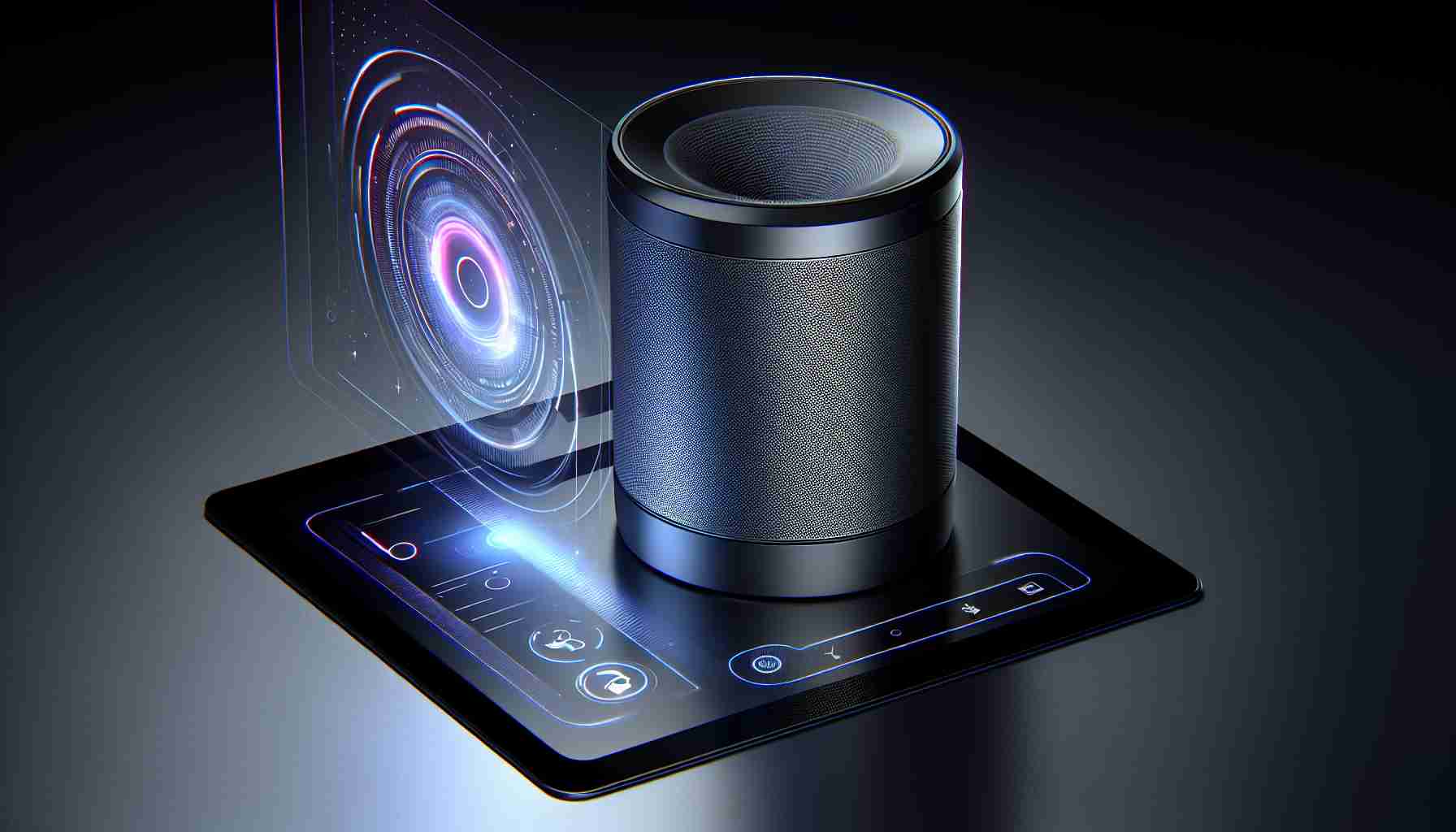An innovative feature is set to define the next version of Apple’s HomePod: a touchscreen interface that could replace the speaker’s current touchpad. This refined design has been showcased by a reliable leaker, presenting what appears to be a circular glass element, akin to a ship’s porthole. Anticipation grows as this new leak hints at a merger between tactile and display technologies in Apple’s smart home strategy.
The envisioned screen is speculated to be simplistic, yet functional. It is believed that Apple may integrate a display similar to that of an iPod, aimed at providing essential information such as media details and offering quick access to audio controls. Users might also anticipate touch command capabilities, streamlining the navigation between diverse streaming services and essential features like AirPlay.
This emerging concept suggests a significant shift in user experience: the option to manage auditory output directly through the device, independent of external gadgets like iPhones or iPads, or even bypassing voice commands through Siri. Despite these intriguing glimpses, Apple has yet to confirm details about the release of this prospective gadget.
Outside predictions, corroborated by industry analysts, have alluded to Apple’s exploration of various HomePod models, including one with a display akin to an iPad’s visual interface. More futuristic proposals have even considered a HomePod with a display mounted on a robotic arm—though fascinating, such a spectacle in the domestic setting remains within the realm of speculation.
As anticipation builds, fans and tech enthusiasts may look to WWDC 2024 for possible announcements, yet with no guarantees as the event typically emphasizes software advancements. For now, the tech community watches and waits for the next HomePod innovation that Apple brings to the space of smart home integration.
Important Questions & Answers about Apple’s HomePod Evolution:
1. What is the significance of adding a touchscreen to the HomePod?
A touchscreen interface would modernize the HomePod, allowing for direct interaction and possibly reducing dependence on other devices. This could enhance the user experience by enabling visual feedback and easier control, potentially increasing the device’s appeal.
2. How does this evolution align with Apple’s smart home strategy?
Integrating a touchscreen could enhance the HomePod’s ability to serve as a central hub within Apple’s ecosystem, linking various smart home devices and services. A touchscreen might also offer improved compatibility with Apple’s HomeKit framework for smart home management.
3. What are key challenges in incorporating a touchscreen into the HomePod?
Challenges include ensuring the screen adds value without complicating the user experience, maintaining the HomePod’s audio quality while adding new features, and keeping the cost at a level that doesn’t deter potential buyers.
Key Challenges and Controversies:
– Compatibility: The introduction of a touchscreen HomePod must ensure seamless integration with the existing ecosystem of Apple products and services.
– Privacy: With more interactive features, the HomePod would collect more user data, potentially raising privacy concerns that Apple will need to address.
– Innovative Balance: Apple must balance innovation with practical functionality to not alienate users who prefer the simplicity of voice-activated devices.
– Price Point: With added features, there’s a potential for a higher price, which could affect the HomePod’s competitiveness in the smart speaker market.
Advantages and Disadvantages:
Advantages:
– Enhanced user interaction through both touch and voice commands.
– Display offers visual feedback for settings and currently playing media.
– Could reduce the need for a connected iOS device for operation.
– May support more detailed controls and settings that are not easily managed by voice.
Disadvantages:
– A touchscreen could lead to a higher cost.
– It may complexify the device for users who prefer simple voice interactions.
– Introducing a screen increases the risk of hardware issues, such as screen malfunctions or breaks.
– Requires careful design to ensure it doesn’t detract from the device’s aesthetic appeal.
For those looking for more information on Apple and its products, visiting Apple’s official website will provide the most up-to-date and reliable information. Access Apple’s main domain with the following link: Apple.
The source of the article is from the blog be3.sk
